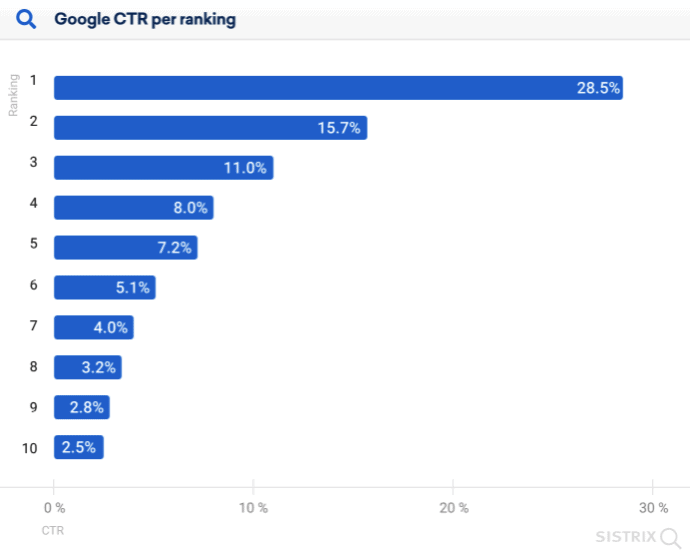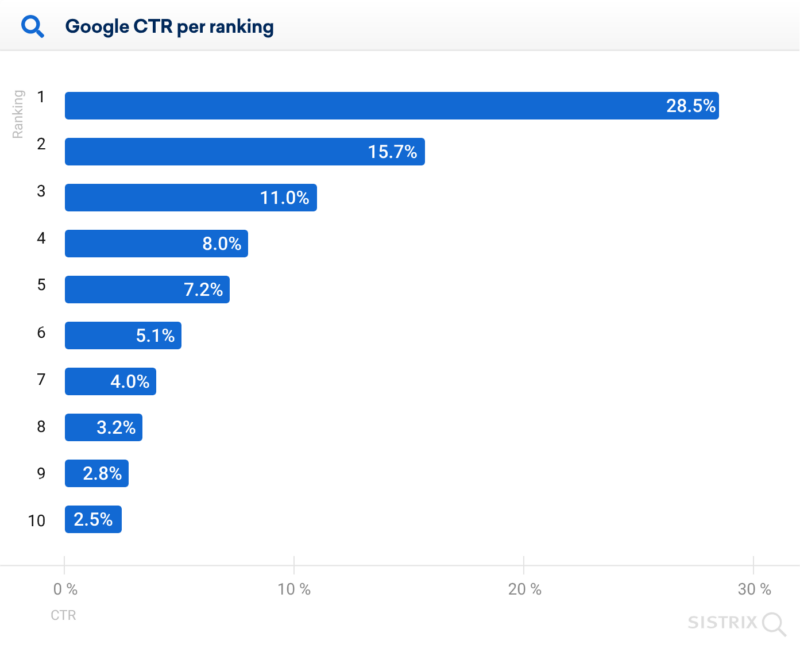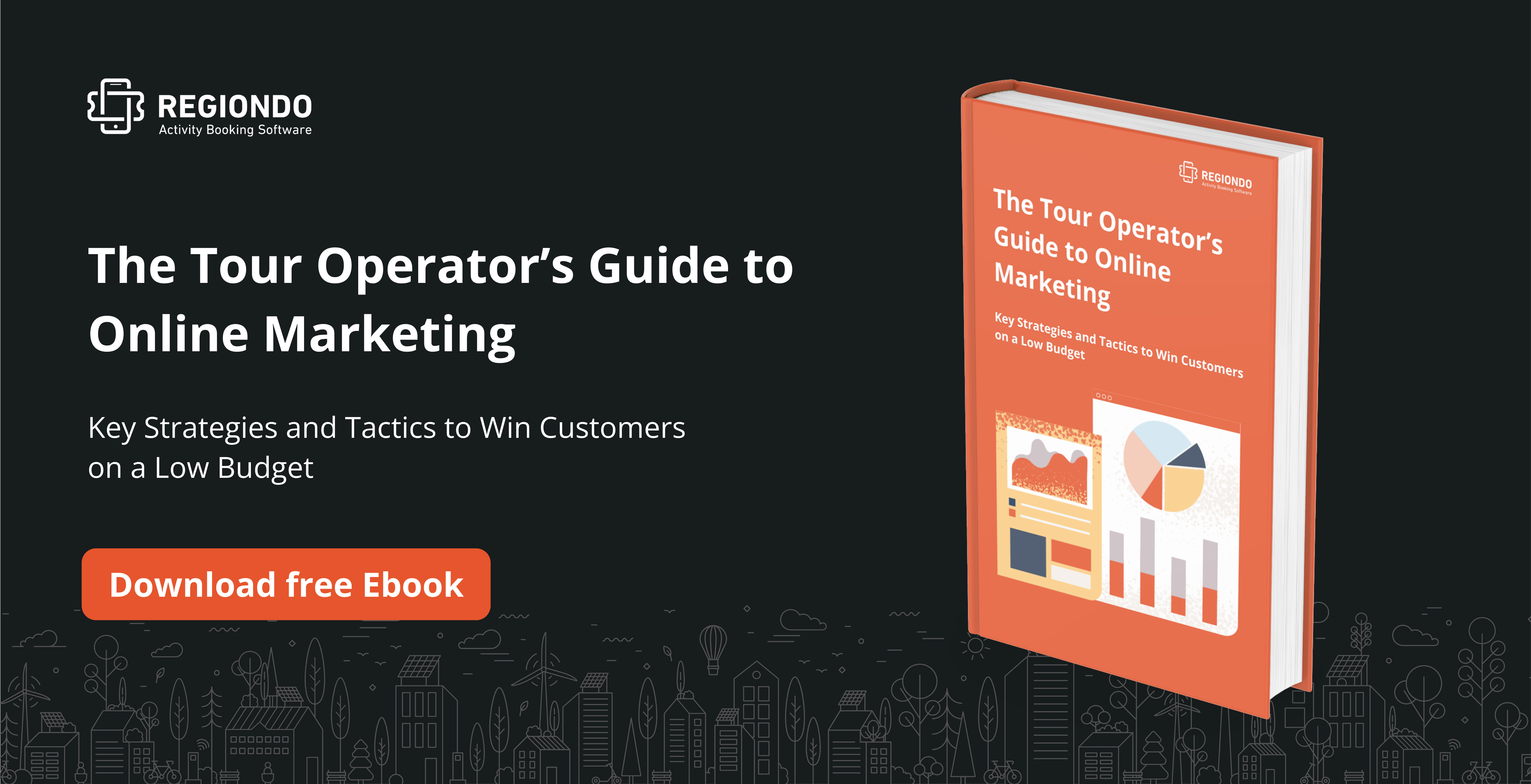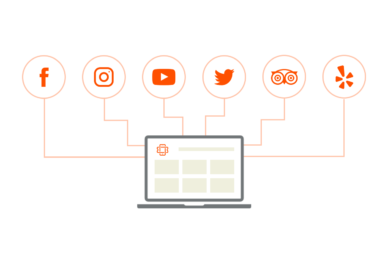If done right, using Google Ads is one of the fastest ways to grow your website’s traffic and drive sales, and if you’re in the tour and activity business, this is something you should focus on.
In this article, we’re going to go into detail about growing your tour and activity business using Google Ads. We’ll explain the advantages of Google Ads, outline what you need to get started, and point you to more detailed resources on how to use Google Ads to grow your business.
The Advantages of using Google Ads
Data shows that Google Ads pay off. At least 64.6% of online users click on Google Ads when searching for items online. And 99% of all online visitors will only click on the search results of the first page. What’s more, the very first search page result has a click-through rate of 28.5%, while the tenth result only has a 2.5% click-through rate.

So what does all this mean for your business if you use Google Ads? In short, if featured on top of Google’s first page, your business will have increased clicks and visibility.
There are three main ways your tour company will benefit as a result of utilizing Google Ads:
- Google Ads lead you to your target audience, which means your business will have access to more potential customers;
- Your business will appear in search results when potential customers are typing specific keywords. This means you’re tending to their needs at the perfect time;
- Google Ads are a way to “skip the line” and help your business leap to the top page and beat the competition that’s ranking organically.
With these advantages in mind, how should you leverage the power of Google Ads? Let’s look at where you should begin.
What you need to get started
Now that you’re ready to get serious about Google Ads, there are things you need to set in place first. These include:
A website: The Ads you’ll create will eventually direct your audience to your website. You need to have a great website with relevant content so that people can easily find what they are searching for once they click through the ad.
Easy-to-navigate pages: Once visitors land on your webpage, make that interaction as effortless as possible. They should find answers to their questions with little to no hassle. Avoid visual clutter and optimize pages for mobile use since most people browse the internet using their phones. A mobile-friendly webpage should be smooth to navigate and quick to load.
A great booking system: Your Google Ads will be aimed at driving ticket sales to those customers looking to book tours or activities. To maximize this opportunity, you need to have a great booking system on your website, to allow for a seamless booking process.
Tip: Regiondo is the all-in-one booking system made for tours and activities. Start your free trial below.

How to use Google Ads to grow your tour and activity business
As we’ve stated above, taking the right steps to optimize your ads can help you rank for the right keywords, bring the ideal traffic to your site, and ultimately drive more sales.
If you’re using the strategies below, your Google Ad efforts can pay off handsomely:
Master advanced target audience
One way to ensure a good return on your marketing investment (ROI) is to target the right audience. The right audience consists of the people that are ready to buy from you and need little to no convincing.
Getting this target audience requires you to understand your potential client’s identity, query needs, and patterns. Consider the following factors:
Life events, seasons, and location data
Your audience’s life events and demographic data will influence your targeting strategy. For example, let’s take a trampoline park booking process. What age group is more likely to make a booking with a trampoline park? What time of the year are they likely to book? Where are most of your customers based?
If you answer these questions objectively, you may prioritize targeting young parents with kids during the school holiday period rather than, say, retirees.
Remember to factor in seasonal trends. Bid more on days or hours when your audience is likely to be on holiday and therefore looking for tours and activities.
Use the dimensions tab to access geographic reports. A good strategy would be bidding for travellers or locals within your tour location and directing them to visit your tour site.
Display, affinity, and in-market audiences
Your audience does much more than search keywords when online. People spend most of their time consuming related content on blogs, articles, forums, or video platforms. These are the “display audiences.”
Your tour or activities company can target display audiences by placing Ads on the GDN (Google Display Network) with banners, videos, and text ads. Here’s how to make the most of this:
- Handpick the websites you want your ads to show up on.
- Use keyword targeting where you select the web page text you want your ad to appear next to.
- Include visuals in your ad, and you will stand out from the 67.5% of ad buyers that only use text to attract users. Research shows that a picture is worth a thousand words and moves people more than words do.

You can also target “affinity audiences.” These are people with a long-standing interest or passion for a specific topic. Take, for example, a group of cycling enthusiasts. If you own a bike tour company, you can target such an audience at a time when they are planning a vacation in your area.
The other type of audience your company can target are “in-market audiences.” These are individuals Google identifies as actively looking to make a purchase or engage with a service in your specific market. The best part about this group is that they are further down the sales funnel and more likely to convert into a booking.
Remarketing and similar audiences
After covering all your bases, targeting the right audience, and sending them to your website, there is still a large percentage of potential customers that slip through your marketing funnel. This is where remarketing comes in.
Assessing your Google analytics and using Google Ads remarketing lists allows you to customize your ad copy, landing pages, and bids to re-target the people who left without booking your tour or activity. This means they will see your ads as they browse other websites and potentially come back to complete a purchase.
You can also use the targeting feature for remarketing new products to customers who have already purchased your product. Additionally, Google can target an audience similar to your remarketing list. Remarketing to similar audiences can bring a 41% increase in conversion rates.
Research relevant keywords
Your Google Ad keywords should mirror buyer intent. Buyers use informational, transactional, or orienting words when looking up products.
- Informational keywords revolve around the when, where, how to and what queries.
- Transactional words include prices and package searches.
- Orienting words encompass comparisons or reviews.
All keywords have different values. Transactional keyword users will convert easily because they are in the final stage of their buyer journey. Informational keyword users need more nudging to bring them to the edge of a sale.
If you are using pay-per-click ads, you need to zero in on the most rewarding keywords as per your intent. Use keyword tools to highlight the best search words and bid for them.
Specific search phrases or long-tail keywords might have fewer takers, but they can help your ads convert better. Just so you know, at least 70% of users type in long-tail keywords when searching online.
Learn more about keyword research in our dedicated article on the topic.

Plan for negative keywords
Use the built-in Keyword Planner and your search terms report to factor in negative keywords and exclude them from your campaigns. This will keep your ads from displaying to audiences that may search for similar terms but have zero interest in your services.
Let’s use an example to explain this further. Imagine your company will be bidding for the term bus tours or bus trips. But some searchers may be looking for bus tour jobs; therefore, the term jobs can be your negative keyword. Remove this term from your ad campaign to save unnecessary costs.
Write great ad copy
Aside from relevant copy and attractive images, you can use the Google Expanded Text Ads feature to boost your traffic. This tool increases pay-per-click advertising conversions because the Google Expanded Text Ads take up more space on the results page, capturing the attention of more users. Use it to share highly valuable search intent information for high-value purchases.
Check out these copywriting tips for tours and activities.
Design optimal landing pages
Your landing page is a vital point of contact between you and your leads. Use your landing pages to nurture potential leads by using interesting content and catchy design features.
A great landing page can increase your traffic and bring a 5% increase in your site’s conversion rates. Excellent landing page design will amp up your SEO efforts. 48% of top-of-the-line landing pages rank in Google’s organic listings.
Focus on getting reviews
Tours and activities can be expensive purchases for the average person. Customers are more likely to do their research before they find you trustworthy. Furthermore, they have to share private information with you when making their bookings. With this in mind, be deliberate in offering evidence as to why a potential customer should book with you.
Providing proof of legitimacy gains your potential client’s trust. How? By using testimonials and/or reviews on your landing pages. Positive reviews offer social proof that your business can be trusted.
At least 88% of online buyers go over reviews and trust testimonials before making their final purchase decision. According to Semrush, you need 150+ reviews to boost your pages to the top of SERPs.

Bid on your brand
Bid on your brand name to increase its visibility in the search results. This strategy gives you more influence on the search results visuals. It is also an excellent way to control the message that you intend to share with users. Think of it as a cheap and efficient way to lead customers to your page.
Set your budget the right way
A good Google Ad budget should fit your brand’s marketing needs. Determine your marketing needs by researching audience and marketing goals. To ensure your money is well spent, plan your keyword use through the Keyword Planner. Second, have test campaigns to create a profitable keyword use strategy. Use data to zero in on the best-performing campaign and then optimize it.
Track, measure and improve your results
Google Ad is a complex but effective advertising tool. The analysis of ad performance, therefore, needs to take many variables into account. To measure your performance for optimization, observe your ad campaign’s conversion and traffic-based metrics.
Traffic-based data analyzes your quality scores, impressions, cost per click, and click-through rates. Conversion-based data takes your conversion rates, cost per conversion, and your ROI data into account when determining ad performance. Use these metrics to track, analyze, and improve your ad campaigns.
Set up your goal tracking with our guide to Google Analytics.
Conclusion
Google Ads should be an important part of your online marketing strategy. The ads will build your online presence and help you rise above the competition. Here’s a summary of how to use Google Ads to grow your tour and activity business:
- Target a paying audience with the right and relevant keywords
- Eliminate negative keywords
- Entice your audience with excellent ad copy
- Design optimal landing pages
- Bid on your brand
- Amass a good number of reviews
- Budget for your Ads
- Track, measure and improve your results






